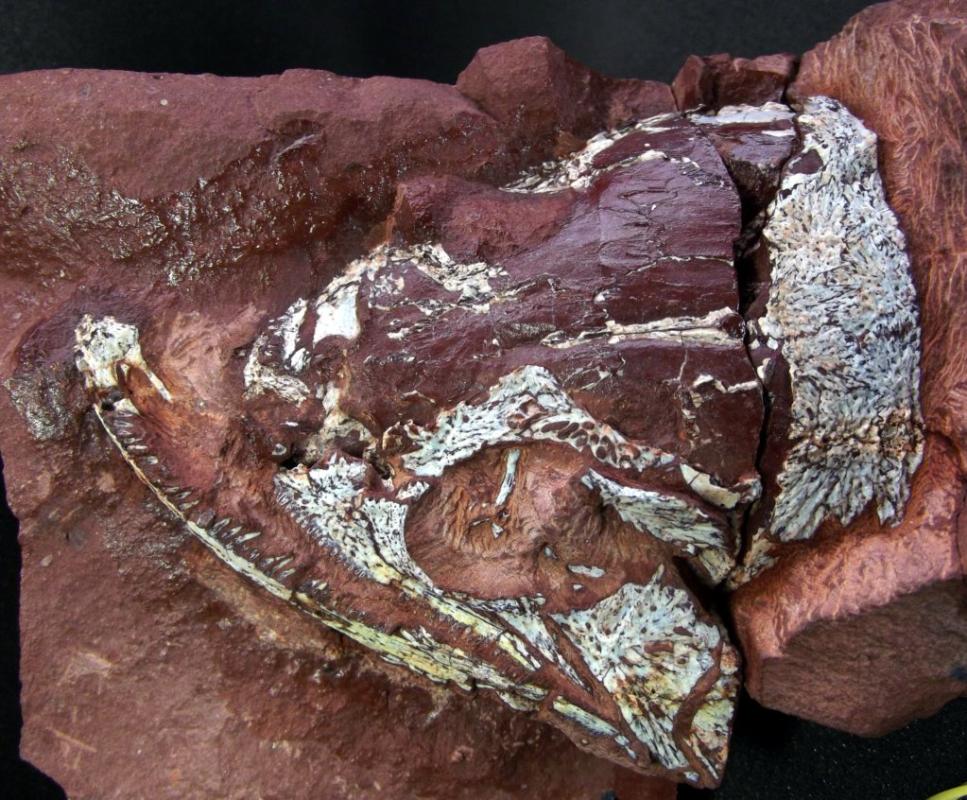An international team of scientists including Jörg Fröbisch, Professor for Paleobiology and Evolution at the Museum für Naturkunde Berlin, discovered a new 278 million year old fossil vertebrate fauna with new species of amphibians and reptiles in northeastern Brazil, which provides new insights into the early biogeographic patterns of land vertebrates. The Results are published this week in Nature Communications.
Two hundred and seventy-eight million years ago, the world was a different place. Not only were the landmasses merged into the supercontinent of Pangaea, but the land was home to ancient animals unlike anything alive today. Almost all the knowledge about land animals from this time comes from southern North America and western Europe, which were then located near the equator on the northern hemisphere. But until now, very little information was available about what animals were present in the southern tropics, which today represents one of the most species rich areas of the world.
The study, published in Nature Communications, describes two new species, both archaic aquatic carnivorous amphibians. One, Timonya annae (tih-MOAN-yuh ann-AYE), was a small, fully aquatic amphibian with fangs and gills, looking something like a cross between a modern Mexican salamander and an eel. The other new species, Procuhy nazarienis (pro-KOO-ee naz-ar-ee-en-sis), an amphibian whose name in the Timbira language of its Brazilian homeland, means “fire frog.” Procuhy didn’t live in fire, though—it spent its whole life in water. Its name comes from the Pedra de Fogo (“Rock of Fire”) Formation where it’s from, so named for the presence of flint. Although both species are distant relatives of modern salamanders, they are not true frogs or salamanders, but members of an extinct group that was common during the Permian.
In addition to these two new species, the paper also describes a collie-sized amphibian whose closest relatives lived in later times in southern Africa, and a lizard-like reptile species, Captorhinus aguti, that until now has only been found far away in North America. The fact that these species have also been found in modern-day Brazil helps scientists paint a picture of the ways that animals spread during the Permian and how they colonized new areas.
“Our new finds may indicate that already 278million years ago the southern tropics were an important cradle for biodiversity in higher latitudes during the later Permian”, said Jörg Fröbisch. “These hypotheses will need to be tested by future studies, as definitive statements are currently not possible due to the limited fossil record during this time. Special hope lies in future discoveries of additional still unknown fossil sites in the paleotropics.”
This research was sponsored by the Negaunee Foundation, The Grainger Foundation, The Field Museum, Conselho Nacional para a Ciência e Tecnologia, National Geographic Committee for Research and Exploration, Universidad de Buenos Aires Ciencia y Técnica, a Sofja Kovalevskaja Award of the Alexander von Humboldt Foundation, and the Natural History Museum of London. The research team includes scientists from Brazil’s Universidade Federal do Piauí, Argentina’s Universidad de Buenos Aires, the Iziko South African Museum, South Africa’s University of Witwatersrand, London’s Natural History Museum, Berlin’s Museum für Naturkunde and Humboldt-Universität, and Chicago’s Field Museum and Saint Xavier University.
Publication:
Cisneros et al. (2015) New Permian fauna from tropical Gondwana. Nature Communications 6:8676. DOI: 10.1038/ncomms9676
Contact:
Prof. Dr. Jörg Fröbisch, Tel. +49(0)30 2093 8941 Fax. +49(0)30 2093 8565, E-mail: joerg.froebisch@mfn-berlin.de; www.naturkundemuseum-berlin.de/en/institution/mitarbeiter/froebisch-joerg/
